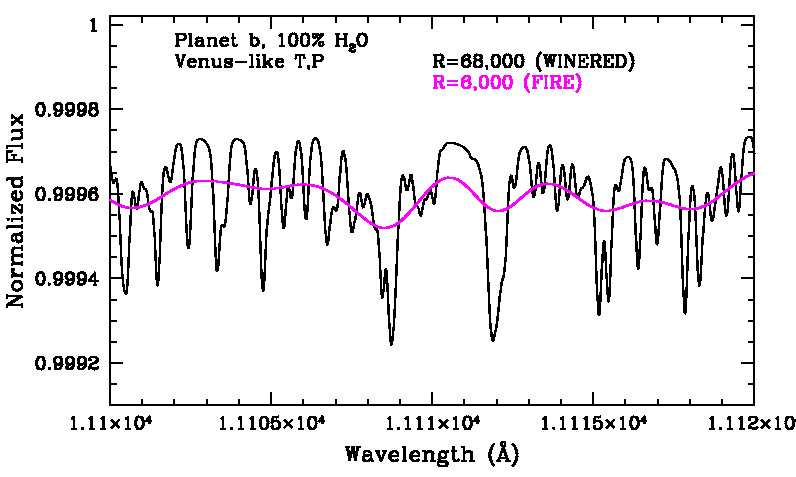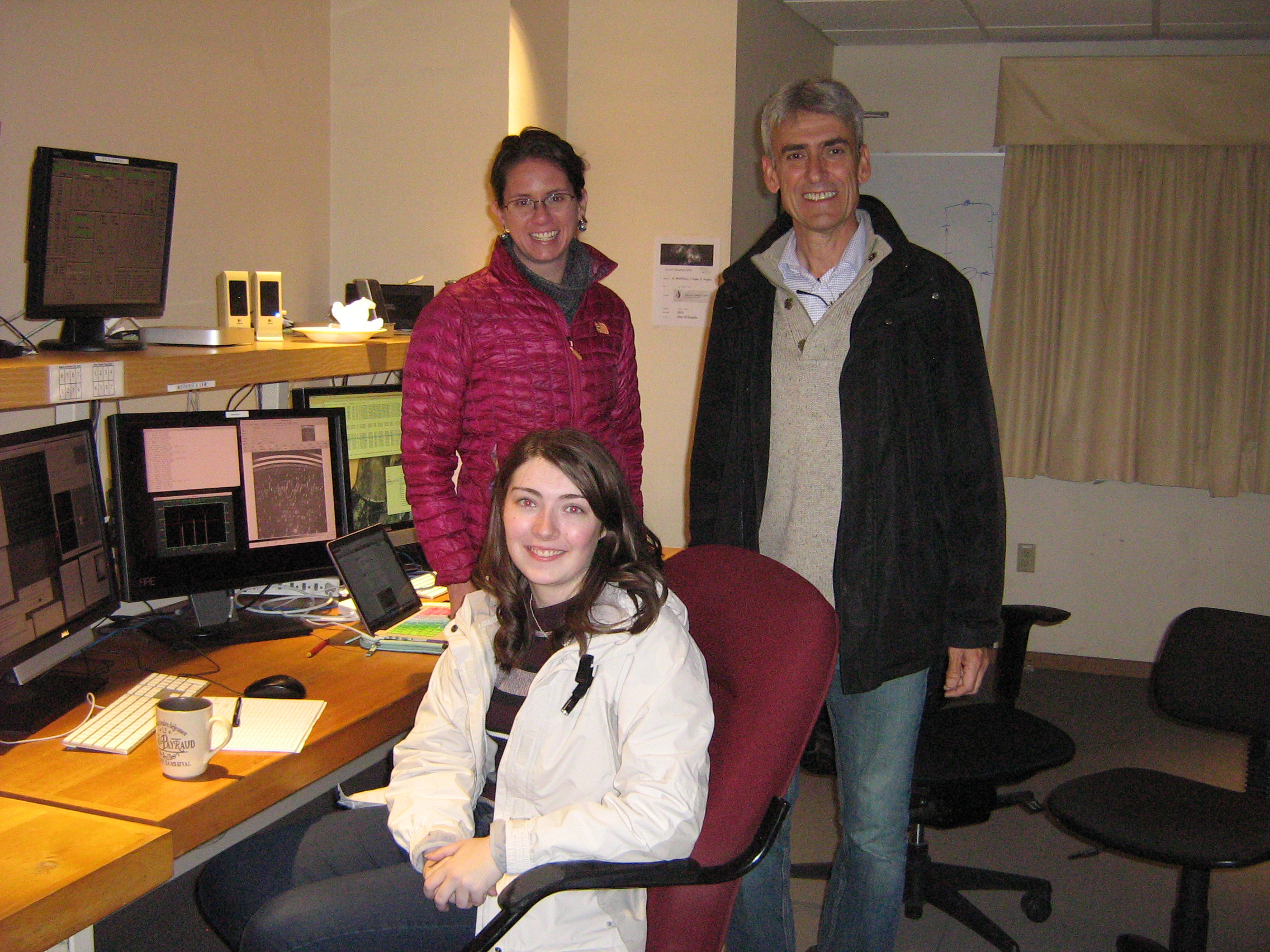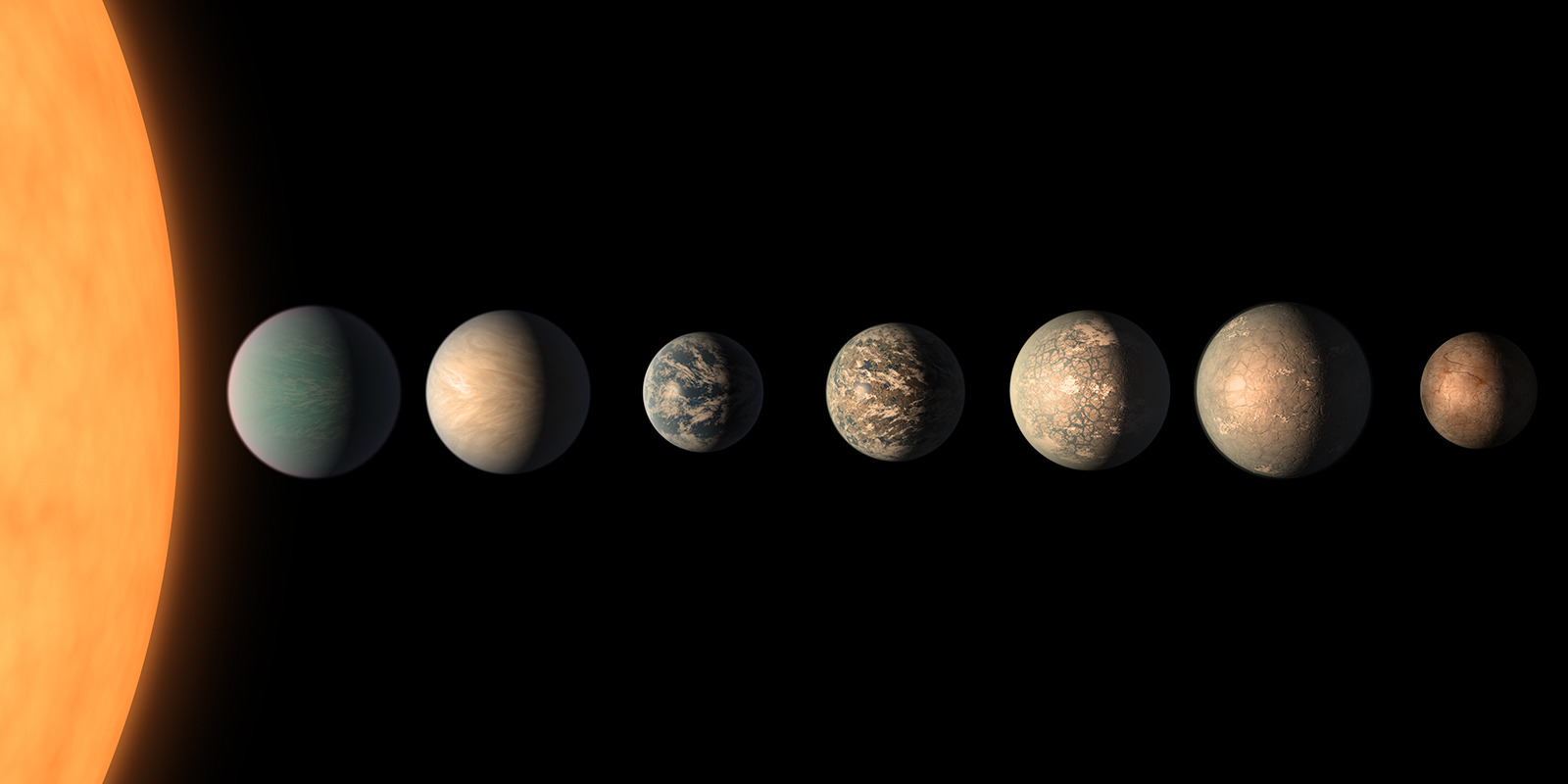The Quest For Exoplanet Atmospheres
Carnegie In The News
"We started thinking, what if these planets aren’t airy like cotton candy at all? . . . What if the super-puffs seem so large because they are actually surrounded by rings?"

Andrew McWilliam’s prior research focused on understanding the chemical evolution of our galaxy and nearby galaxies from high-resolution spectra of their stars. Inspired by the discovery of the TRAPPIST-1 system, with seven Earth-sized planets orbiting a nearby M dwarf star, he is changing course to pursue the quest to detect the atmospheres of terrestrial exoplanets.
In collaboration with Japanese astronomers and Carnegie’s newest staff astronomer, Johanna Teske, McWilliam is bringing a high-resolution near-infrared spectrograph, WINERED, to Carnegie’s Magellan telescopes for this research.

This graph compares a small region of a predicted transit spectrum for TRAPPIST-1b, with 100% H2O, for the FIRE spectrograph (pink) and for the WINERED spectrograph (black). The many dips and hills show much more detail for WINERED.
Image courtesy Andrew McWilliam, Carnegie Institution for Science
Spectrographs spread light into its constituent wavelengths. Dark absorption lines imposed on the spectra are signatures of atoms and molecules in the outer layers of an object, containing information on the chemical composition, temperature, gas pressure, and velocity.

It is unclear what spectral resolution and wavelengths will be most effective at detecting exoplanet atmospheres from the ground, therefore astronomers are taking a multipronged approach. In this case, McWilliam is leveraging his expertise in high-resolution spectroscopy.
Because terrestrial exoplanets are relatively small with thin atmospheres, the atmospheric signal is extremely weak. However, detectability is greatest for planets transiting in front of the smallest stars (M dwarfs). M dwarfs are roughly 1/10th the size of the Sun and half the temperature, with an emitted light peak at near-infrared wavelengths. For this reason, near-infrared spectrographs like WINERED are well suited for atmospheric studies of M dwarf exoplanets.

Satellite image - NASA’s Transiting Exoplanets Survey Satellite (TESS), launched in 2018, is surveying 200,000 of the brightest stars near the Sun to search for exoplanets. Image courtesy Hernán Nuñez
One way astronomers disentangle spectral absorption lines from the exoplanet atmosphere and the same lines in the Earth’s atmosphere is to employ a high-resolution spectrograph, which greatly spreads out the wavelengths of light. The line-of-sight velocity difference between the exoplanet and Earth shifts the exoplanet absorption lines away from the Earth’s lines. Because of the weak signal, detection of the exoplanet atmosphere absorption lines requires an average over many lines and many transits. WINERED allows many lines in the transit spectrum to be combined, detected between the Earth’s lines, which increases the exoplanet signal to detect an exoplanet atmosphere.
Earth’s atmospheric chemistry has been modified by life, volcanism, weathering, the oceans, plate tectonics, and core magnetism. Thus, exoplanet atmospheric compositions may probe these conditions on other worlds. WINERED is currently at the Magellan telescopes, awaiting installation. Meanwhile, McWilliam is developing his code to predict exoplanet atmosphere transit spectra, essential for comparison with observations and to identify promising targets.

In 2017, NASA’s Spitzer Space Telescope revealed that TRAPPIST-1, an ultra-cool dwarf star in the Aquarius constellation, was the first-known system of seven Earth-sized planets orbiting a single star. Three of these planets are in the so-called habitable zone, the distance from the central star at which liquid water is most likely to be found. The discovery of this system changed the course of Andrew McWilliam’s research.
Image courtesy NASA/JPL/Caltech
